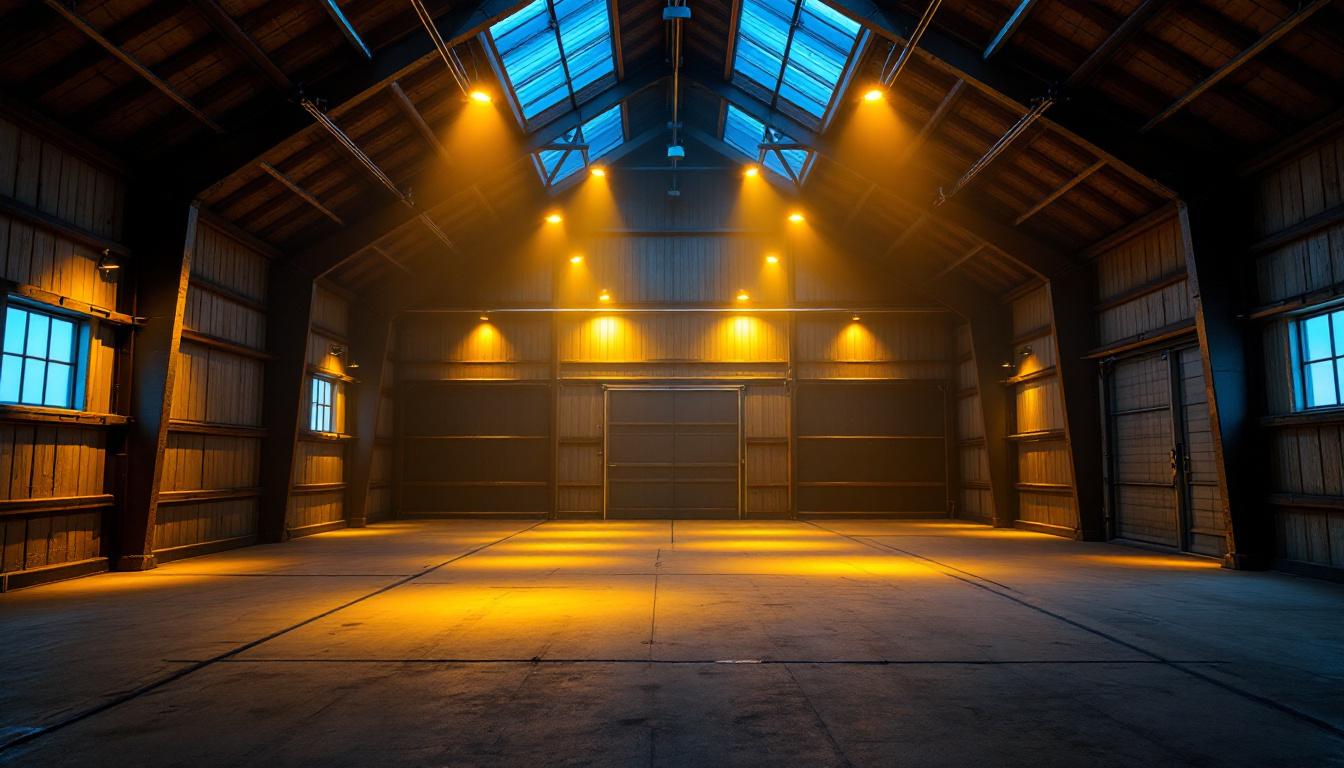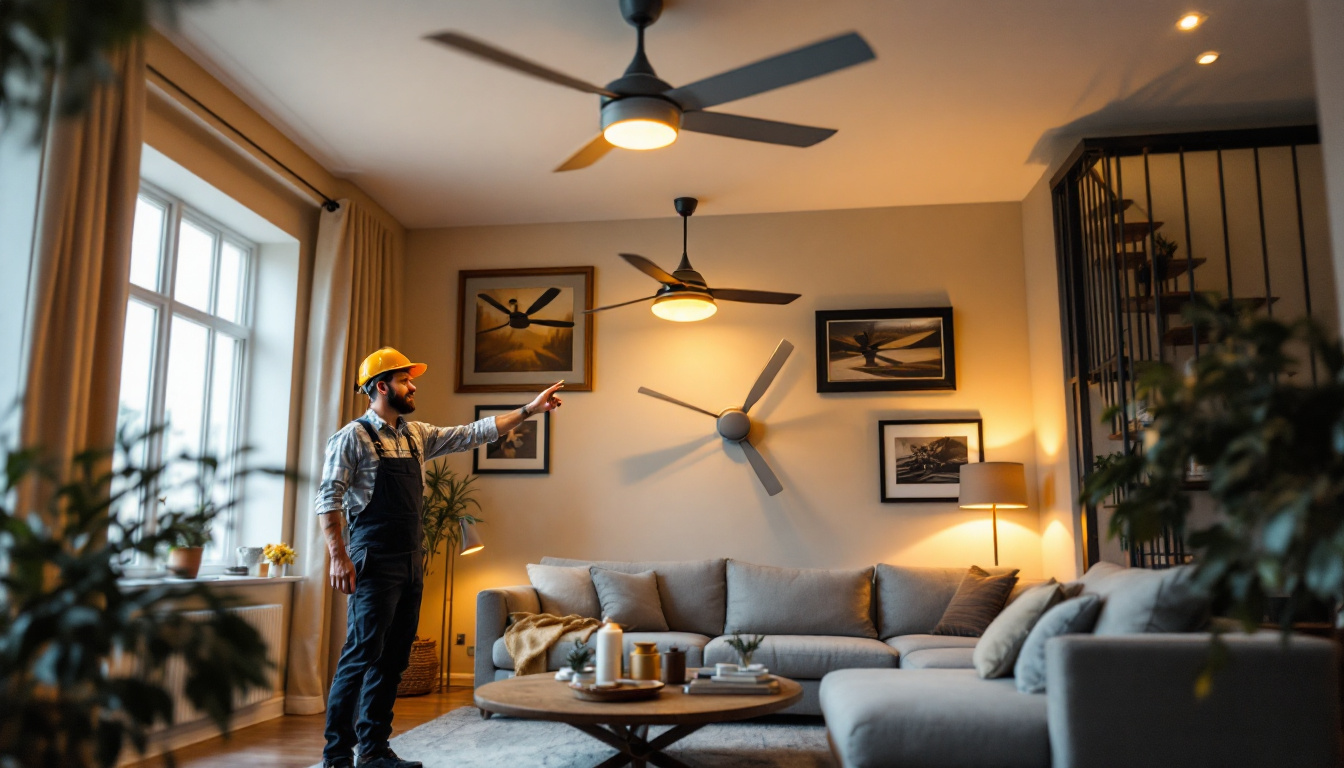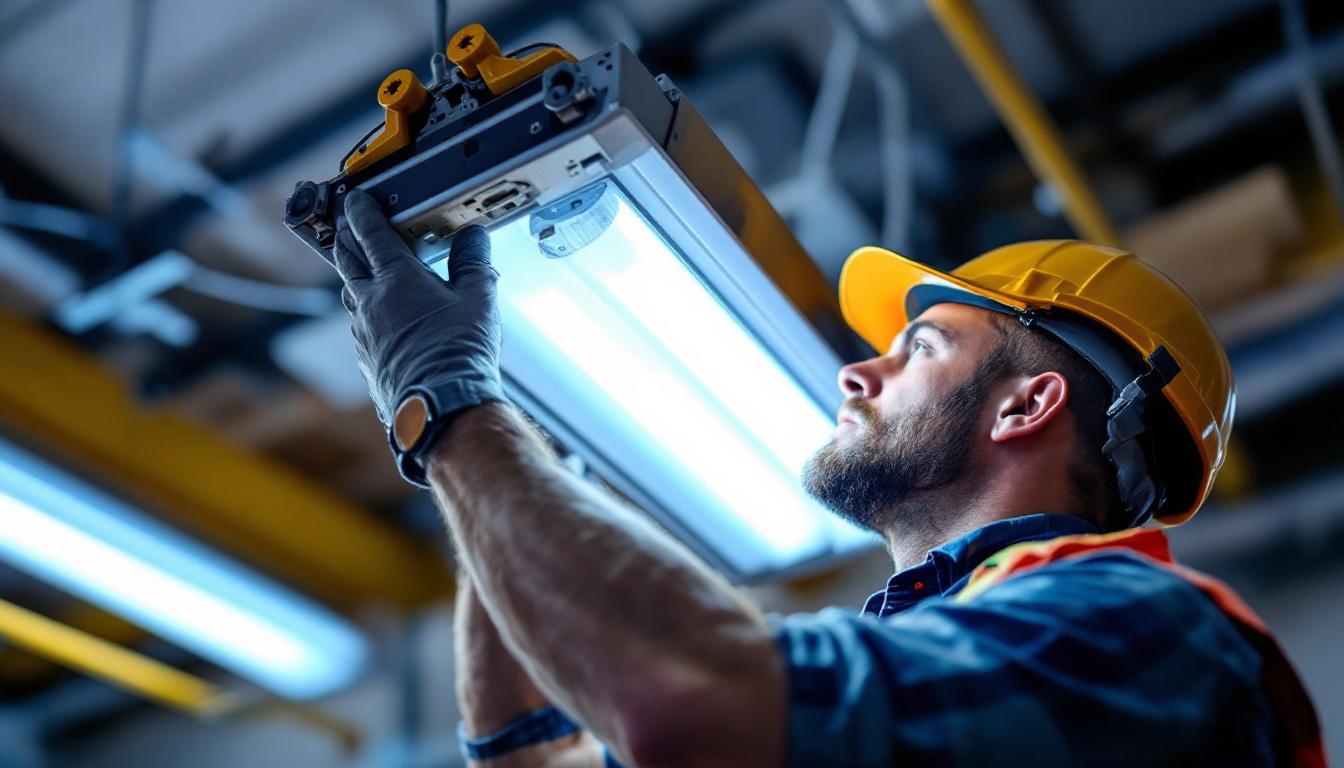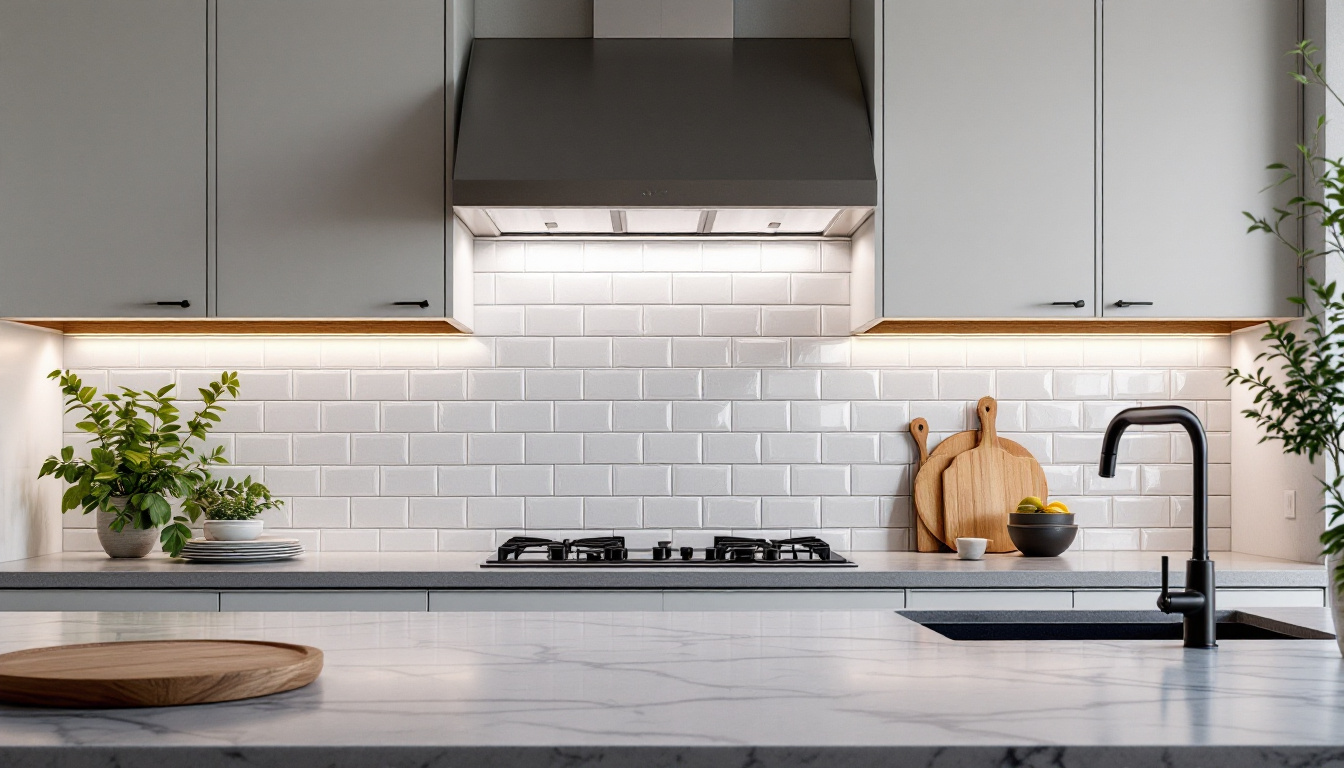
In recent years, the agricultural sector has witnessed a significant transformation in lighting technology. The introduction of LED lights has revolutionized how barns are illuminated, providing not only enhanced visibility but also substantial energy savings. For lighting contractors, understanding the impact of LED lighting on energy efficiency is crucial in making informed decisions for their clients. This article delves into the benefits of LED lights in barns, examining their energy efficiency, cost-effectiveness, and overall impact on agricultural operations.
LED, or Light Emitting Diode, technology has emerged as a frontrunner in the lighting industry due to its unique properties and advantages over traditional lighting options. Unlike incandescent or fluorescent bulbs, LEDs produce light through a semiconductor process, resulting in a more efficient energy conversion.
The operation of LEDs is based on electroluminescence, where electrons move through a semiconductor material and release energy in the form of light. This process is highly efficient, converting a greater percentage of electrical energy into visible light compared to conventional bulbs. As a result, LEDs consume significantly less power, making them an ideal choice for barn lighting.
When selecting LED lights for barns, several types are available, each suited for different applications. High bay LED lights are popular for large open spaces, providing bright, uniform illumination essential for livestock areas and storage. Additionally, LED floodlights are ideal for outdoor areas, ensuring safety and visibility during nighttime operations.
Task lighting, such as LED strip lights, can also be utilized in specific work areas, enhancing visibility for detailed tasks like maintenance and repairs. Understanding the various types of LED lights available allows lighting contractors to tailor solutions to meet the specific needs of barn environments.
Moreover, the durability of LED lights makes them particularly advantageous in a barn setting. Unlike traditional bulbs, which can easily break or fail in harsh conditions, LEDs are solid-state lights that can withstand vibrations, humidity, and temperature fluctuations. This resilience not only reduces the frequency of replacements but also minimizes maintenance costs over time. Additionally, many LED fixtures come with features such as dimming capabilities and smart technology integration, allowing barn operators to customize lighting levels based on specific tasks or times of day, further enhancing energy efficiency.
Another key consideration when implementing LED lighting in barns is the impact on animal welfare. Studies have shown that the quality of light can influence animal behavior and productivity. For instance, LEDs can be designed to emit specific wavelengths that are more comfortable for livestock, promoting better growth rates and overall health. Furthermore, the ability to control light intensity and duration can help simulate natural daylight cycles, which is crucial for maintaining the well-being of animals housed indoors. This thoughtful approach to lighting not only benefits the barn’s operational efficiency but also contributes to a more humane environment for the animals.
The primary advantage of LED lights lies in their energy efficiency. Traditional lighting options often waste energy through heat production, whereas LEDs operate at a much cooler temperature. This efficiency translates into lower energy consumption, which is particularly beneficial for barns that require extensive lighting for long hours.
When comparing energy consumption, LED lights can use up to 80% less energy than incandescent bulbs and about 50% less than fluorescent lights. This drastic reduction in energy usage not only lowers electricity bills but also contributes to a smaller carbon footprint, aligning with sustainable agricultural practices.
For lighting contractors, showcasing these statistics to clients can help emphasize the long-term savings associated with switching to LED lighting. The initial investment in LED technology is often recouped quickly through reduced energy costs, making it a financially sound choice for barn owners.
Another aspect of energy efficiency is the longevity of LED lights. Typically, an LED bulb can last anywhere from 25,000 to 50,000 hours, significantly outlasting traditional bulbs that may only last a few thousand hours. This extended lifespan means fewer replacements, resulting in lower maintenance costs over time.
For barn operators, this translates into less downtime and disruption, as there is less need for frequent bulb changes. Lighting contractors can highlight this benefit when discussing the overall value proposition of LED lights with their clients.
While the upfront cost of LED lights may be higher compared to traditional lighting options, the long-term savings and benefits far outweigh the initial investment. The combination of reduced energy consumption and lower maintenance costs contributes to a compelling case for LED adoption in barns.
Calculating the return on investment for LED lighting involves considering both energy savings and maintenance costs. By analyzing the average usage hours of barn lighting and the cost of electricity, lighting contractors can provide clients with a clear picture of potential savings over time.
For example, a barn that operates lighting for 12 hours a day can see substantial savings in energy costs by switching to LED lights. Over the lifespan of the bulbs, these savings can accumulate, leading to a significant ROI that justifies the initial expenditure.
Many regions offer incentives and rebates for businesses that invest in energy-efficient technologies. Lighting contractors should be aware of local programs that can help offset the cost of LED installations. By leveraging these incentives, barn owners can further enhance the cost-effectiveness of their lighting upgrades.
Promoting these financial benefits can be an effective strategy for lighting contractors when discussing LED options with clients, making the transition to energy-efficient lighting even more appealing.
The shift towards LED lighting in barns is not just an economic decision; it also has significant environmental implications. As the agricultural sector increasingly focuses on sustainability, adopting energy-efficient lighting solutions plays a vital role in reducing overall environmental impact.
By consuming less energy, LED lights contribute to a reduction in greenhouse gas emissions. The energy savings associated with LEDs mean that less electricity is required from power plants, many of which rely on fossil fuels. This reduction in energy demand can lead to lower carbon emissions, aligning with global efforts to combat climate change.
For barn operators, adopting LED lighting is a proactive step towards sustainability. Lighting contractors can assist clients in understanding how their choices impact the environment, fostering a sense of responsibility and community engagement.
In addition to reducing energy consumption, LED lighting supports other sustainable practices in agriculture. Improved lighting can enhance animal welfare by providing better visibility in barns, which can lead to healthier livestock. Furthermore, efficient lighting can extend working hours, allowing for more productive use of time and resources.
Lighting contractors can play a pivotal role in promoting these sustainable practices, positioning themselves as partners in the agricultural community’s efforts to adopt environmentally friendly solutions.
Despite the numerous benefits of LED lighting, there are challenges and considerations that lighting contractors must address when recommending these solutions to barn owners. Understanding these factors can help facilitate a smoother transition to LED technology.
One of the primary challenges in adopting LED lighting is the initial investment. While the long-term savings are significant, some barn owners may be hesitant to allocate funds for the upfront costs. Lighting contractors should be prepared to provide detailed cost analyses and demonstrate the potential return on investment.
Additionally, offering flexible financing options or suggesting phased installations can help alleviate budget constraints, making it easier for clients to commit to LED upgrades.
Another consideration is the compatibility of LED lights with existing electrical systems. In some cases, barn owners may have outdated wiring or fixtures that are not suitable for LED installations. Lighting contractors should conduct thorough assessments of the current lighting infrastructure to identify any necessary upgrades or modifications.
By addressing these compatibility issues proactively, contractors can ensure a seamless transition to LED lighting, minimizing disruptions and maximizing efficiency.
The landscape of barn lighting is continuously evolving, with new technologies and innovations on the horizon. Staying informed about these trends can provide lighting contractors with a competitive edge and help them offer the best solutions to their clients.
One of the most exciting trends in lighting technology is the rise of smart lighting solutions. These systems allow for greater control over lighting conditions, enabling barn owners to adjust brightness levels, set schedules, and even monitor energy usage remotely. Integrating smart technology with LED lighting can enhance energy efficiency even further.
Lighting contractors should familiarize themselves with smart lighting options and be prepared to offer these solutions to clients looking for advanced control over their barn lighting systems.
As the agricultural sector increasingly embraces renewable energy sources, such as solar and wind power, integrating LED lighting with these systems is becoming more common. Utilizing solar-powered LED lights can further reduce energy costs and enhance sustainability efforts.
Lighting contractors can play a crucial role in advising clients on how to integrate LED lighting with renewable energy solutions, creating a holistic approach to energy efficiency in barns.
The impact of LED lights on energy efficiency in barns is profound, offering numerous benefits that extend beyond mere illumination. With their energy-saving capabilities, cost-effectiveness, and positive environmental implications, LEDs represent a smart investment for barn owners. Lighting contractors have the opportunity to guide clients through the transition to LED technology, providing valuable insights and solutions that enhance agricultural operations.
As the agricultural sector continues to evolve, staying informed about advancements in lighting technology will be essential for lighting contractors. By embracing LED lighting and its associated benefits, contractors can position themselves as leaders in energy efficiency and sustainability within the industry.
Ready to transform your barn with the energy-saving power of LED lighting? At LumenWholesale, we provide lighting contractors with the highest quality, spec-grade LED products at unbeatable wholesale prices. Say goodbye to local distributor markups and hello to superior lighting solutions that meet the strictest industry standards. With our hassle-free bulk buying and free shipping, you can equip your agricultural projects with premium lighting at the best value — all without hidden fees or compromises. Enhance your barn’s energy efficiency and embrace sustainability today. Wholesale Lighting at the Best Value is just a click away!

Discover the ultimate guide to purchasing ceiling fans, tailored specifically for lighting contractors.

Learn how to safely take off a fluorescent light cover with expert tips from a lighting contractor.

Discover essential insights and expert tips on the Led Lamp T5 for lighting contractors.

Discover the essential do’s and don’ts for lighting contractors when choosing the best under cabinet lights.